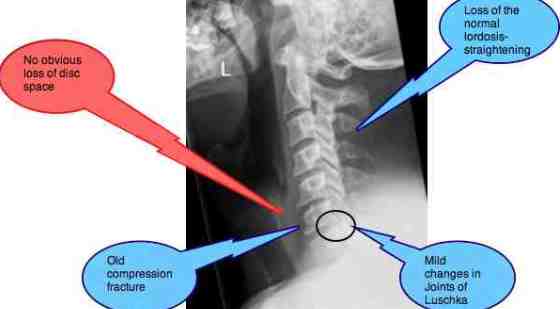Ayurvedic Treatment
For Men
- Sexual Counselling
- Male infertility Low Sperm Count
- Sexual Strength
- Rejuvenation
- Erectile Dysfunction
- Premature Ejaculation
- Nightfall
- Penis Enlargement
- Male Low Libido
- Male Hormone Disorder
- Male Impotence
- Prostate Enlargement
For Women
- Breast Enlargement
- Tighten Vagina
- PCOD
- Eddometriosis
- Female Infertility
- Female Low Libido
- Menopausal Syndrome
- Irregular Menstruation
- Leucorrhea (Discharge)
- Fibroid
- Vaginitis
- Cervicitis
- Dyspareunia
Arthritis / Joint Pains
- Rumatoid Arthritis
- Gout
- Stroke
- Osteoarhtritis
- Osteoporosis
- Cervical Spondylosis
- Ankylosing Spondylitis
- Sacroiliitis Disease
- Back Pain
- Slipped Disc
- Sciatica
- Frozen Shoulder
GIT Problems
- Constipation
- Weak Digestion
- Peptic ulcer
- Ulcerative Colitis
- Hepatitis
- Hepatitis B
- Hepatitis C
- Cirrhosis of Liver
- Irritable bowel syndrome (IBS)
- Crohn's Disease
- Piles Disease
- GERD
Skin / Acne Problems
- Cancer
- Thyroid
- Diabetes
- Weight Loss
- SLE
- Fibromyalgia
- Low immunity
- Anti Aging Treatment
- Anemia
- Dark Circles & Wrinkles
Cardiac System
Slipped Disc:

A slipped disc, otherwise called a prolapsed or herniated disc, is the place one of the discs in the spine ruptures and the gel inside breaks out. A herniated disc happens when the intervertebral disc's annulus is harmed and the delicate internal material of the core pulposus ruptures out of its typical space. In the event that the annulus tears close to the spinal channel, the core pulposus material can push into the spinal waterway. There is next to no additional space around the spinal line in the thoracic territory. So when a herniated disc happens in the mid back it might be extremely serious. In extreme cases, the force on the spinal rope can prompt loss of motion underneath the waist. Luckily, herniated discs are not almost as normal in the thoracic spine as in the lumbar spine. A herniated disc is a condition in which the disc between two vertebrae cracks and the internal focal core pops out of the disc and distends to or against the spinal channel, putting force on the spinal nerves. Your back and neck have soft, rubbery discs between each two vertebrae in your spinal column that absorb shock and help spinal adaptability. Down the core of this spinal section runs the empty spinal trench, which conveys the spinal line and a heap of nerve roots. The point when a disc is herniated, the projection generally presses on these nerves.
Causes of Slipped Disc:
A slipped disc occurs when the external instance of the disc cracks (parts), bringing about the gel inside swelling and jutting out of the disc. The damaged disc can put force in general spinal line or on a solitary nerve root. This means that a slipped disc can cause pain both in the territory of the jutting disc and in the zone of the figure that is regulated by the nerve that the disc is pressing on.
The most frequently causes are:
- An accident that might have caused direct, or indirect pressure on the spinal column may contribute toward aggravating the condition.
- Frequent and improper turning and twisting of the back causes extreme pressure and strain on the spinal column and discs.
- Improper heavy-lifting technique.
- Middle to older age group.
- Excessive body weight.
- Repetitive strenuous activity.
Symptoms Of Slipped Disc
The side effects of an accurate herniated disc may not incorporate back pain whatsoever. The symptoms originate from force on, and aggravation of, the nerves. At the same time numerous individuals do have back pain since they have different issues in their back when the disc ruptures. Where these symptoms occur hinges on upon which nerve(s) has been influenced in the lumbar spine.
The indications of a slipped disc more often than not could be :
Risk Factors for Slipped Disc:
- Drawn out shortcoming with a shivering sensation notwithstanding resting and embracing provincial intercessions.
- Back pain that exacerbates when you are resting as contrasted with when you are portable.
- Deadness or shivering in areas of one or both legs.
- Muscle weakness, deadness, or shivering in one or both legs.
- Increases reflexes in one or both legs that can cause spasticity.
- Shortcoming or deadness in one or both easier appendages.
- Extreme back pain with hints of blood in the urine.
- Throbbing pain focusing on the internal parts of the thigh.
- Changes in bladder or bowel function.
- Loss of motion starting from the waist.
- Urinary incontinence.
Yoga asana for Slipped Disc:
Here are some of the most useful Yoga asanas for Slip Disc. Before practicing these Yogasanas you should seek guidance of your health provider and should only practice under guidance of a Yoga expert.
- Pawan muktasana
- Sarpasana
- Dhanurasan
- Shalabhasana
- Dandasana
- Bhujangasan
- Tadasana
Ayurvrdic Treatment Slipped Disc:
he treatment of sciatica in Ayurveda is based on a set of principles involving Ayurvedic medicines, Ayurvedic Panchakarma therapy and Ayurvedic Herbs.Panchakarma Procedures like Kati Basti, Patra Pottali, Swedana, and Basti treatment are useful Panchakarma procedure in Slip Disc. These Procedures provides proper lubrication to the back bone hence maintaining easiness in movementsand alleviates stiffness from back bone. Ayurvedic Formulations: Tryodashang Guggulu, Vishtinduk Vati, Herbal Tea are useful Ayurveda formulations in Slip Disc. Punarnavadi guggulu is beneficial if patient have stasis edema. Due to these medicine muscle tension released and nourishes the lower back. It alleviates pressure from the nerves passing through this region thus relieves pain. Ayurvedic Herbs: Guggul, Shallki, are some of the Ayurveda herbs which are useful in Slip Disc treatment.
Copyright © 2026. All Right Reserved.




